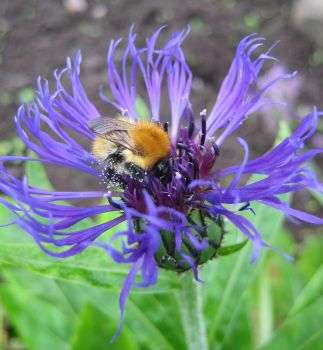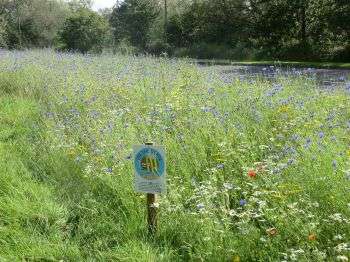Urban sites sown with wildflowers attractive to wildlife

A study into the attractiveness to wildlife of urban sites sown with wildflower seeds has shown that roundabouts and road verges can easily be converted into flower-rich havens for bees and other wildlife by replacing grass with wild flowers.
Simple schemes involving sowing wildflower seed mixes resulted in 50 times more bumblebees and 13 times as many hoverflies on unused corners of land in urban areas, says new research from the University of Sussex and the University of Stirling.
The study, published in the journal Insect Diversity & Conservation1, looked at 30 patches of wildflowers sown on roundabouts, road verges, parks, school grounds and even in the grounds of a rugby club, all within urban areas in Central Scotland.
The seeds were sown by the Stirling-based group On the Verge, with the intention of helping support beleaguered populations of bumblebees, which are threatened in farmland by intensive farming practices, including loss of wildflowers and exposure to insecticides. The seed mix contained a range of meadow wildflowers of local provenance.
Professor Dave Goulson, the study's senior author, says: "It is wonderful to see how effective this simple approach is. The flowers are beautiful, much more attractive than the regularly-mown grass they replaced, and less trouble to look after. In summer these patches were alive with insects of all sorts."

Lorna Blackmore, who carried out the study, says: "The On the Verge team that planted these patches have shown just how easy it is to boost nature in the city. They also provide city-dwellers with an opportunity to experience nature right on their doorstep."
Professor Dave Goulson adds: "With urban areas set to expand considerably in the UK, this is one way we can minimise the impact on wildlife. Perhaps we can turn our cities and towns into sanctuaries for wildlife, places where wildflowers, bees, butterflies and birds can all thrive."
More information: "Evaluating the effectiveness of wildflower seed mixes for boosting floral diversity and bumblebee and hoverfly abundance in urban areas," Lorna Blackmore and Dave Goulson. Published in the journal Insect Conservation and Diversity, online February 2014.
Provided by University of Sussex





















